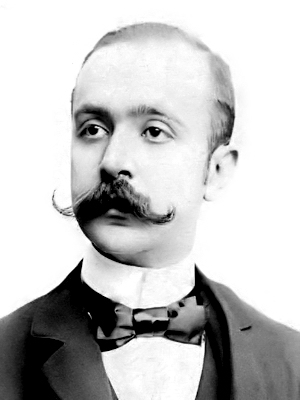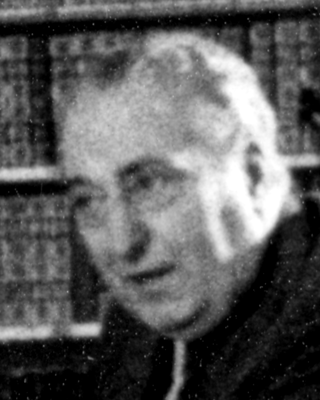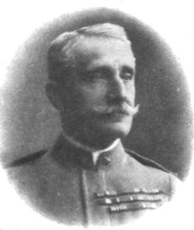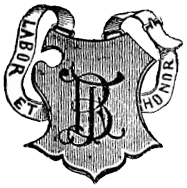History
The publishing house was born on 1 January 1861 with the name of the founder: Emilio Treves. Unlike many other publishers, he did not devote himself to feuilletons, but published literary works of the scapigliatura, suitable for an educated public, by authors such as Iginio Ugo Tarchetti and Antonio Ghislanzoni. From 1867 he also began to print on his own, taking over an already established typography. In 1868 he published in the series Biblioteca utile (nº 84), one of the first works by Edmondo De Amicis, La vita militare, printed by Pietro Agnelli's typography; the writer established a lasting professional collaboration with the publishing house.
In 1870 Emilio associated his younger brother Giuseppe (1838-1904) with the management. He entrusted to him all the administrative and commercial aspects. In 1872, when the collaboration became continuous, the publishing house took the definitive name of Fratelli Treves.
Subsequently Treves approached verismo by publishing the then unknown Giovanni Verga (Eva, 1873), which led to success. In a few years the publishing house started collaborations with the best Italian writers of the time. Among others: Anton Giulio Barrili, Vittorio Bersezio, Camillo Boito, Giacinto Gallina, Gerolamo Rovetta, Emilio De Marchi, Maria Virginia Fabroni, Cordelia (pseudonym of Virginia Tedeschi-Treves, wife of Giuseppe Treves) and Gabriele D'Annunzio, the best known poet at the time.
Treves published the first Italian translations of works by foreign writers such as Flaubert, Zola, Bourget, Maupassant, Tolstoy, Dostoevsky, Turgenev and Gorky, Sienkiewicz and Samuel Smiles.
The Fratelli Treves then, after addressing the educated public, started also to appeal to the general public.
On 17 October 1886, Heart by De Amicis was published. The work was an immediate success and in a few months passed the forty editions. [1] In 1889 the list of writers was enriched by the arrival of Gabriele D'Annunzio, a writer already established at the time.
Between the end of the century and the beginning of the next, two new illustrated newspapers came out: Corriere illustrato (weekly, which however suffered competition from Luigi Albertini's powerful Domenica del Corriere) and Il Secolo XX (1902 [9] - 1913 [10 ]; in 1927 it passed to Rizzoli, which published it until 1933, a monthly, conceived in response to La Lettura, another creation by Albertini), in which Gabriele D'Annunzio, Raffaello Barbiera, Ada Negri and Ugo Ojetti collaborated. Among the designers of the first page appeared the signatures of Duilio Cambellotti, Rodolfo Paoletti and Luigi Bompard. [2]
In 1904, after the premature death of Giuseppe Treves, Emilio decided to open the publishing house to external sources of financing, setting up an anonymous company. Treves himself, his wife Virginia and Banca Zaccaria Pisa bought the main shares. The company management was shared between Emilio and his nephew Guido Treves, son of his brother Enrico.
The activity of the publishing house went through a period of constant expansion: in the decade 1900-1910 production rose from 88 new titles a year to 188 (not counting the reissues of dictionaries and school books). [3] Among the new collaborations, those with the writers Luigi Capuana were noted, Luigi Pirandello and Federigo Tozzi. Among the foreigners, the presence of Herbert George Wells stands out. In 1911 Treves inaugurated the first bookstore abroad, opening in Buenos Aires.
Also noteworthy is the reissue of Quo vadis? by Sienkiewicz in 1914 which, in an unusual editorial initiative for the time, [4] was accompanied by 78 still photographs taken from the homonymous film by Enrico Guazzoni, released in 1913.
In 1916 the founder Emilio Treves and his wife Virginia died; the company remained in the hands of Guido and his wife Antonietta Pesenti, who appointed Giovanni Beltrami as managing director. The publishing house continued its activity, however holding up the growing competition with difficulty. He also kept a first-rate catalogue: he published works by Giuseppe Antonio Borgese, Marino Moretti, Ugo Ojetti, Alfredo Panzini, Grazia Deledda, Luciano Zuccoli, Rosso di San Secondo and Sem Benelli.
In 1926, after the death of Beltrami, Calogero Tumminelli [5] took over the leadership of Treves. In 1931 Tumminelli Editore merged with the Treves and Treccani publishing houses, forming SA Treves-Treccani-Tumminelli, which was directed by Tumminelli himself.
In 1929, it published Francesco Salata's Per la storia diplomatica della Questione romana. [6] [7]
The sudden death of Guido Treves (12 May 1932) caused the dissolution of the partnership. Reconstituted as an independent publishing house in 1933, Antonietta Pesenti (widow of Guido) took charge of the new publishing structure, but the company, undercapitalized, lost most of the authors in a few years and was unable to face the necessary investments to modernize the printing facilities, which quickly became obsolete.
In 1939, the Forlì-based industrialist Aldo Garzanti took over the company, immediately changing its name to comply with the fascist racial laws (the Treves were a Jewish family).










